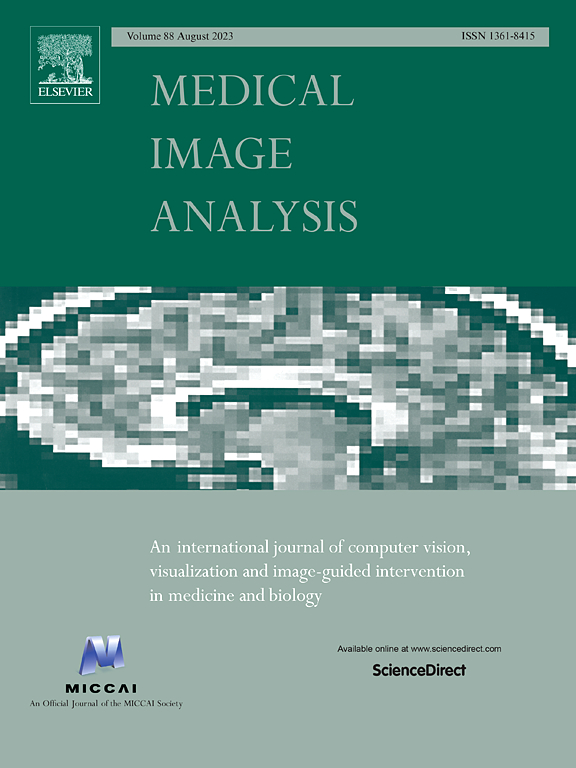Deep learning detection of acute and sub-acute lesion activity from single-timepoint conventional brain MRI in multiple sclerosis
IF 10.7
1区 医学
Q1 COMPUTER SCIENCE, ARTIFICIAL INTELLIGENCE
引用次数: 0
Abstract
Multiple sclerosis (MS) is a chronic inflammatory disease characterized by demyelinating lesions in the central nervous system. Cross-sectional measurements of acute inflammatory lesion activity are typically obtained by detecting the presence of gadolinium enhancement in lesions, which typically lasts 3-6 weeks. We formulate the novel and clinically relevant task of quantification of recent acute lesion activity from the past 24 weeks (6 months) using single-timepoint conventional brain magnetic resonance imaging (MRI). We develop and compare several deep learning (DL) methods for estimating this brain-level acuteness score and show that a 2D-UNet can accurately predict acute disease activity at the patient-level while outperforming transformers and ensemble approaches. In the context of identifying subjects with acute (less than 6 months-old) lesion activity, our 2D-UNet achieves an area under the receiver-operating curve in the range on independent relapsing-remitting MS cohorts. When used in conjunction with measurements of gadolinium-enhancing lesion activity, our model significantly improves the prognostication of future acute lesion activity (over the next 6 months). This model could thus be leveraged for population recruitment in clinical trials to identify a higher number of patients with acute inflammatory activity than current standard approaches (e.g., gadolinium positivity) with a predictable precision/recall trade-off.

深度学习检测多发性硬化症单时间点常规脑MRI急性和亚急性病变活动
多发性硬化症(MS)是一种以中枢神经系统脱髓鞘病变为特征的慢性炎症性疾病。急性炎性病变活动性的横断面测量通常是通过检测病变中钆增强的存在来获得的,这种增强通常持续3-6周。我们利用单时间点常规脑磁共振成像(MRI)对过去24周(6个月)的近期急性病变活动进行量化,这是一项新颖且具有临床意义的任务。我们开发并比较了几种深度学习(DL)方法来估计这种大脑水平的急性评分,并表明2D-UNet可以准确地预测患者水平的急性疾病活动,同时优于变压器和集成方法。在识别急性(小于6个月)病变活动的受试者的背景下,我们的2D-UNet在独立复发-缓解型MS队列中实现了接受者操作曲线下80 - 84%的区域。当与钆增强病变活动性测量结合使用时,我们的模型显著提高了对未来急性病变活动性(未来6个月)的预测。因此,该模型可用于临床试验的人群招募,以确定比当前标准方法(例如钆阳性)更多的急性炎症活动性患者,并具有可预测的精度/召回权衡。
本文章由计算机程序翻译,如有差异,请以英文原文为准。
求助全文
约1分钟内获得全文
求助全文
来源期刊

Medical image analysis
工程技术-工程:生物医学
CiteScore
22.10
自引率
6.40%
发文量
309
审稿时长
6.6 months
期刊介绍:
Medical Image Analysis serves as a platform for sharing new research findings in the realm of medical and biological image analysis, with a focus on applications of computer vision, virtual reality, and robotics to biomedical imaging challenges. The journal prioritizes the publication of high-quality, original papers contributing to the fundamental science of processing, analyzing, and utilizing medical and biological images. It welcomes approaches utilizing biomedical image datasets across all spatial scales, from molecular/cellular imaging to tissue/organ imaging.
 求助内容:
求助内容: 应助结果提醒方式:
应助结果提醒方式:


